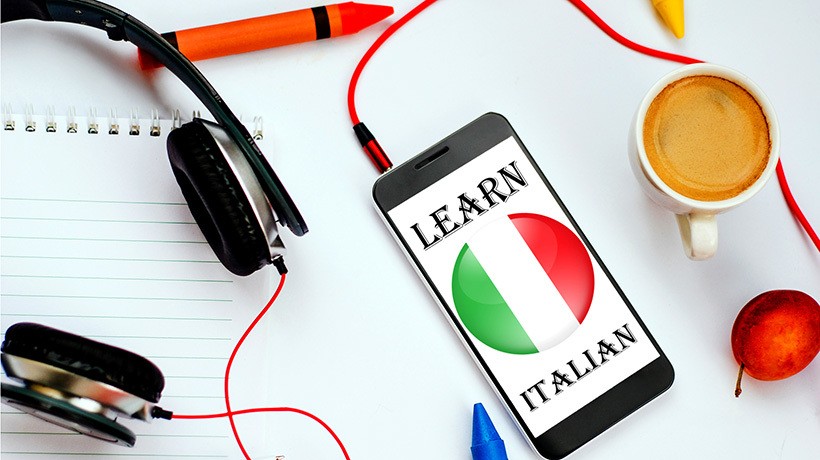Change Your Beliefs If You Want To Live Your Best
I received this fascinating question in the article title from an ESL learner on Quora.com. According to Stephen Krashen, humans become fluent in a language in two ways: by acquiring it or by learning it. Language acquisition is a "subconscious process identical to the process children utilize in acquiring their first language." On the other hand, learning a language is "a conscious process that results in 'knowing about' [the rules of the] language."
However, there is much less distinction between the terms nowadays, and they are used interchangeably because the definitions of "learning" and "acquisition" are identical. Let's compare two popular definitions:
- Learning is knowledge or skill acquired by instruction or study.
- Acquisition is the learning or developing of a skill, habit, or quality.
These definitions explain why people think that "learning" and "acquisition" are synonyms. We need to give new meanings to set them apart and restore the truth to Krashen's distinction between the two: one is conscious (learning), and the other one is subconscious (acquisition).
- Learning is knowledge developed consciously by instruction or study.
- Acquisition is developing a skill, habit, or quality using the subconscious part of the mind.
So, to become a medical professional or attorney, you will need to learn and remember a massive amount of information. To become an Olympic athlete or renowned musician, you must do a lot of subconscious training to perform exceptionally well in sports or musical performances. According to the new definition, learning is associated with the exclusively conscious activity of the mind. In contrast, acquisition is associated with the activities controlled by the subconscious part of our mind. Another distinction between learning and acquisition is the first is teacher-centered, whereas the second is student-centered self-learning guided by coaches.
Features Of Conscious Language Learning
All conventional methods of learning a foreign language use conscious learning and memorization. They teach four language skills separately, hoping you will remember what you read, were told, or had demonstrated to you. However, we know that our brain uses the forgetting mechanism to protect us from information overload. That is why adults suffer from appalling forgetting curves, cross-translation, and the inability to think in the new language.
Besides forgetting, learners face another problem with this approach: recall of consciously learned information is very slow. Learners often hear advice to use spaced repetition to remember more information. This advice is practical for learning medical information, becoming a lawyer, etc. However, this is the wrong advice for language learning since the memorized information does not allow learners to produce the two or three words per second necessary for natural communication.
Our ability to remember is limited, but the ability to subconsciously train our skills is unlimited. The subconscious does not forget anything and helps adults speak fluent English in less than a year. Subconscious training can be implemented with the help of mobile applications.
Features Of Subconscious Language Acquisition
The patented method of subconscious training in English skills creates the environment for language acquisition through simultaneously performing three activities: reading, listening and speaking. Subconscious training is stress-free and has no forgetting curve. It eliminates the ingrained habit of cross-translating into the native language and develops the skill of thinking in English and speaking effortlessly. As students simultaneously read original digital text, listen to a recording, and speak aloud using a headset, their brains subconsciously record language patterns, start thinking in English, and speak fluently by producing two or three words per second. The acquisition is a self-learning activity performed by the student using the mobile app. Fast acquisition of English requires students to change their mindset and transition from traditional conscious learning to acquiring English skills through subconscious training.
Is This Transition To Language Acquisition Easy Or Difficult To Accomplish?
Technically it is easy; psychologically, it is challenging. Technically it is easy because the only requirement is performing three actions simultaneously (reading, listening, and speaking). This kind of multitasking automatically eliminates conscious control and activates the subconscious part of the mind with unlimited storage capacity, without forgetting or cross-translation problems. When learners perform only one or two actions (reading or listening or speaking or watching and listening), they use the slow, conscious part of their mind and face the above-mentioned problems.
Psychologically it is challenging because people are not trained to change their mindset. Change is meant to bring something different, but how different? We are creatures of habit. Routines become automatic, but change pushes us into consciousness when we have to accept unknown solutions.
Anytime you ask people to change their thoughts or actions, you can expect resistance. The truth is that change usually fails because it is actively sabotaged. The comfort of the status quo can be more powerful than the mysterious promise of transformation. People often oppose change because it offends their identity and sense of self. We can't ask people to stop being who they think they are. When people see themselves in a particular way, they rarely change and will pay almost any price to stay true to their inner core.
– Greg Satell.
The shared experience is inextricably associated with personal experience and determines our decisions without letting us know why we have selected this particular option and not the other one. For example, for the traditional methods, conscious learning is the only way to learn a language. What are the results of this status quo? English proficiency in many countries is pretty low, and adults cannot fluently communicate in a foreign language after learning it for many years. Buckminster Fuller said: "You never change things by fighting the existing reality. To change something, build a new model that makes the existing model obsolete." This is why thousands of references that describe the deficiencies of the traditional language learning methods are ignored!
The new model of language acquisition makes the existing model of learning obsolete. You are the beginning of the chain reaction. If you want to live your best, you must wake first and start making conscious decisions that are in your best interests. If you want to speak English fluently in less than a year, choose acquisition over learning.









